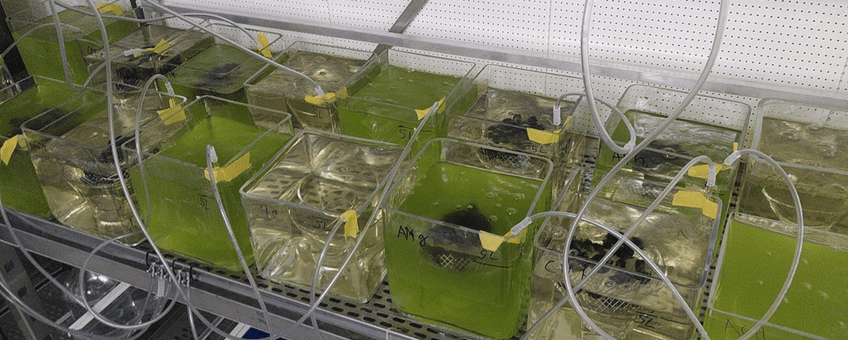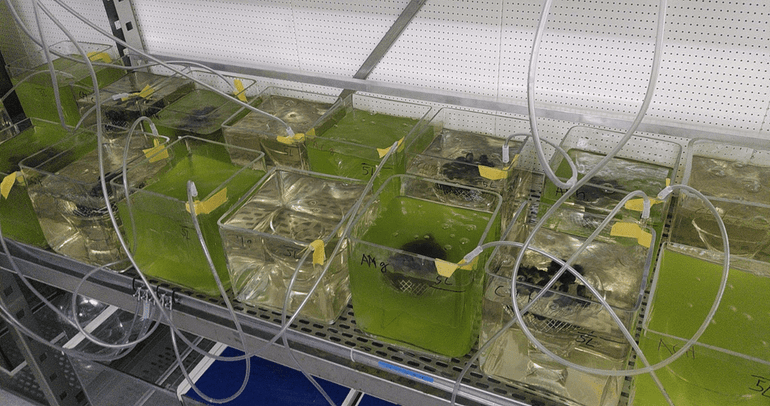
Better sewage treatment can reduce antidepressants in natural waters
Institute for Biodiversity and Ecosystem Dynamics (IBED), Netherlands Institute of Ecology (NIOO-KNAW), Wageningen University & ResearchIt is becoming increasingly clear that residues of these drugs end up in nature through sewage water and cause damage there. In August, researchers from Dutch institutes published an overview of what is known about the environmental risks of 700 psychopharmaceutical drugs in the scientific journal Water Research.
Influence on animal behaviour
In the four-year joint project Psychopharmac'eau, the University of Amsterdam (UvA), the Netherlands Institute of Ecology (NIOO-KNAW) and Wageningen University & Research (WUR) are studying the amount of psychopharmaceuticals in Dutch waters and their impact on nature. Such substances could possibly disrupt communication between organisms.
The overall project leader of this research project, that is part of the Blue Route of the National Science Agenda (NWA), is Annemarie van Wezel, professor of Environmental Ecology at the Institute for Biodiversity and Ecosystem Dynamics (IBED) at the University of Amsterdam. Through their subproject, the IBED researchers compiled a list of more than 500 substances in the so-called ATCN class, related to diseases of the nervous system, supplemented with substances from the opium list.
Van Wezel: "Of these 702 substances, it is not known whether they are present in the environment and in which concentrations. Moreover, we only have data on the risks of 15% of the substances, whereby the sensitive behavioural effects are often not studied. All in all, we can say nothing about the environmental risks of the majority (64%) of these substances prescribed in the Netherlands. Of the substances for which we can assess the risks, a significant proportion does indeed lead to environmental risks."
Major measurement campaign in six cities
In order to collect data on the amount of antidepressants and antipsychotics in the environment in the near future, the scientists have access to a large measurement campaign in sewage treatment plants in six different cities. "We compare the incoming sewage with treated sewage," says Van Wezel. "That way we can find out not only how many psychopharmaceuticals are discharged into surface waters via treated sewage, but also how well the treatment methods are actually able to purify the water of these substances before it enters the environment."
Filtering mussels
Parallel to the research at the IBED, scientists from NIOO-KNAW are meanwhile looking at the subtle effects of the substances present. In limnotrons, large barrels containing several hundred litres of water from a freshwater ecosystem, the NIOO-KNAW ecologists are simulating the effects of various amounts of psychopharmaceuticals on such a system. At the WUR, a study is running at the same time in which the impact of the substances on nature is being investigated via test ditches and test ponds.

The researchers at the three institutes are trying to improve water purification by using new purification technologies. This may even be possible by using natural 'means'. Van Wezel: "We are looking at the possibility offered by algae and mussels, for example. The algae consume the psychopharmaceuticals in the sewage water and the mussels, in turn, eat the algae."
Working together with psychiatrists and policymakers
An important part of the project is also cooperation with doctors and policy makers. Van Wezel: "Some drugs are more harmful to the environment than others. We hope to persuade psychiatrists to prescribe drugs that are less harmful to the environment. Or to prescribe the drugs for a shorter period of time, if possible. There is a guideline for the admission of drugs to the market. Currently, it is not a criterion to prescribe or even authorise a less environmentally harmful drug if it is equally beneficial for the treatment. Ultimately, we want to write a joint position paper in which we make our recommendations to the government."
Text: IBED
Photo: Charlie Davey (test set-up with mussels that eat algae)
